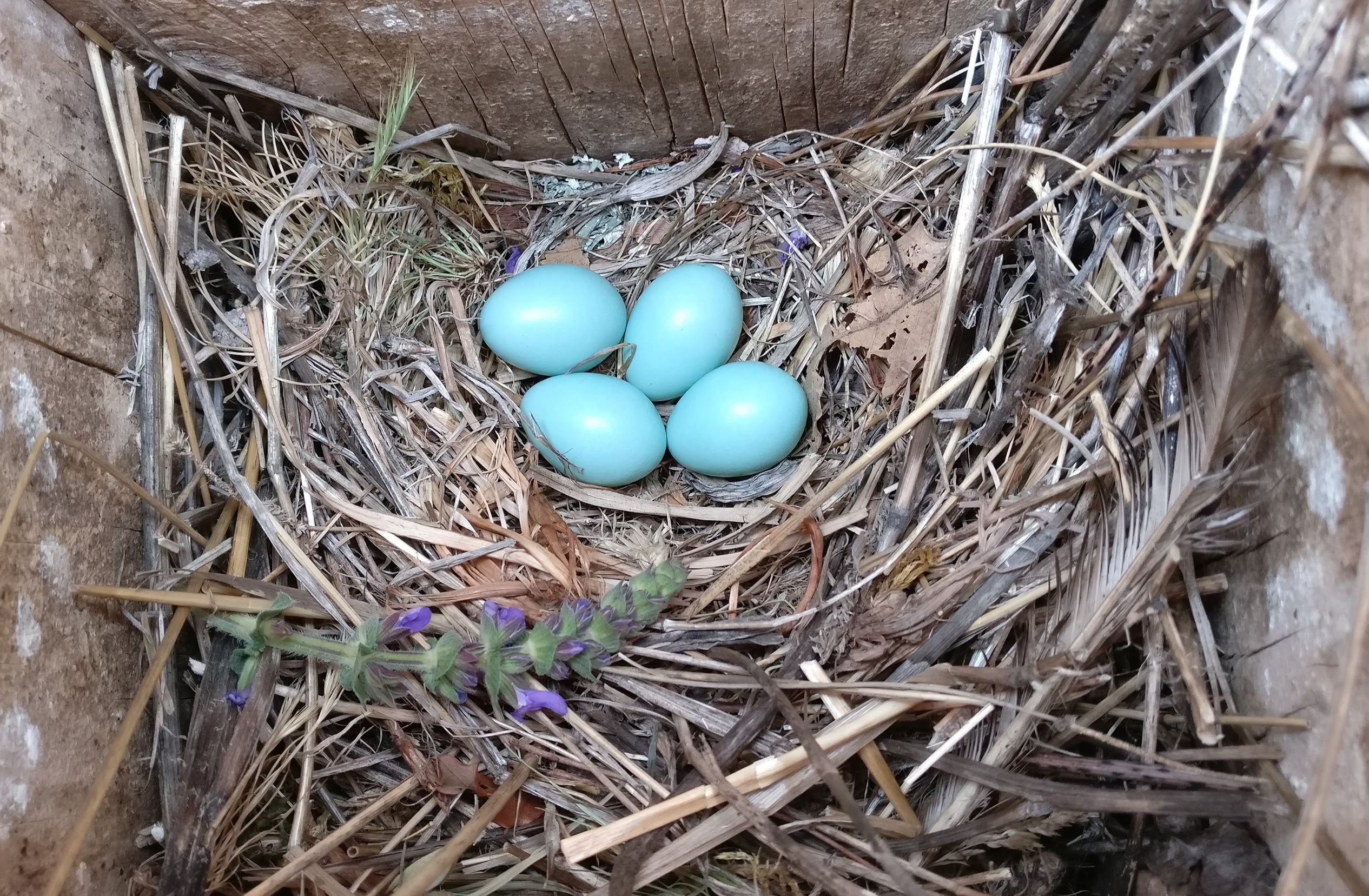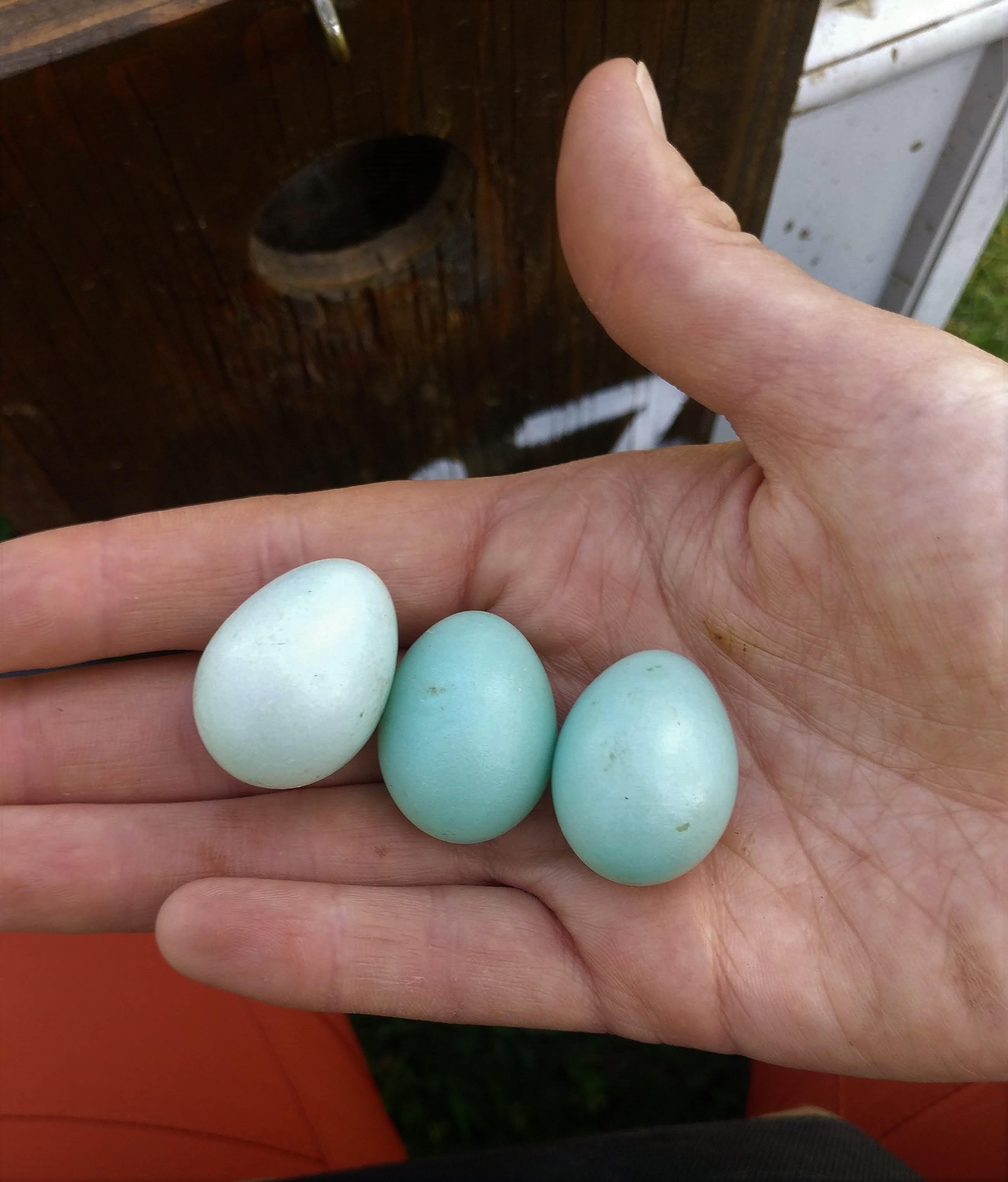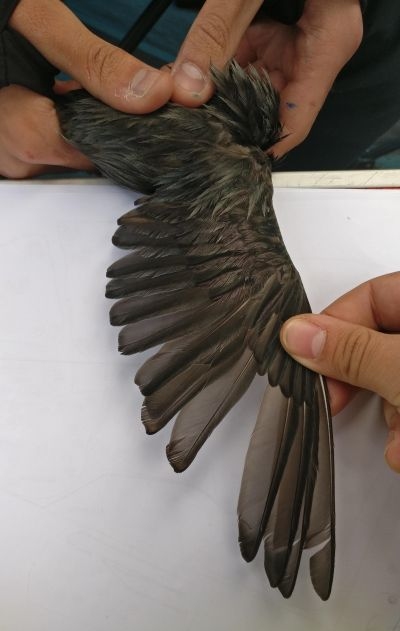
Bibliography
See all- 2022 Journal of Avian Biology: e02913 Experimentally impaired female condition does not affect biliverdin-based egg colour
Does egg colour reflect female body condition in starlings?
Is the colour of the shell of starling eggs related to the conditions of the female when laying? This is the question that we have tried to answer in this work, which will also constitute the second chapter of my doctoral thesis focused on post-mating sexual selection based on egg coloration. In 2003, two Spanish researchers (Juan Moreno and José Luis Osorno) proposed that females in better conditions could produce eggs with a more intensely coloured shell to push their males (which are usually quite lazy) to invest more in parental care.

To find out that this is indeed what happens, we have carried out an experiment in which a handicap was applied to the females: they were temporarily prevented from flying properly, which would slightly affect their conditions and, supposedly, their ability to deposit the blue pigment biliverdin in the shell of their eggs. At the beginning of the breeding season in 2020, we captured some females and we cut them four feathers per wing, to produce the handicap (treatment group), and a similar number of other females that we only handled to simulate the treatment (that is, without actually clipping the feathers) and who constituted our control group. This type of treatment allowed us to ensure that the handicap would last long enough to produce an effect, but without irremediably affecting the females, since in a few months the moult would allow them to grow brand new and intact feathers. In this first phase, we also recorded the weight of each individual. Successively, during laying, we measured the colour of the eggs of the two groups of females, and finally, after a few weeks, we recaptured them and weighed them to verify that the handicap had an effect on the treated females.

Indeed, the comparison between the weights recorded in the first and in the second captures confirmed that the females in the treatment group had gained less weight in those weeks than the control females, and that the handicap had had then the effect that we expected. However, we found no differences between the colour of the eggs of the treated females and those of the control females.

These results tell us that the proximate conditions of the females are very unlikely to affect the colour of their eggs and that the differences we observe in the field are due to other factors. In successive chapters of my thesis we will investigate in more detail some of these factors to try to understand whether in our population the colour of the egg can be a sexual signal.
This work has been carried out and published thanks to the key contributions of Iraida Redondo, Eduardo Gómez-Llanos, Diego Gil and Lorenzo Pérez-Rodríguez.
Stefania d'Arpa (MNCN)









